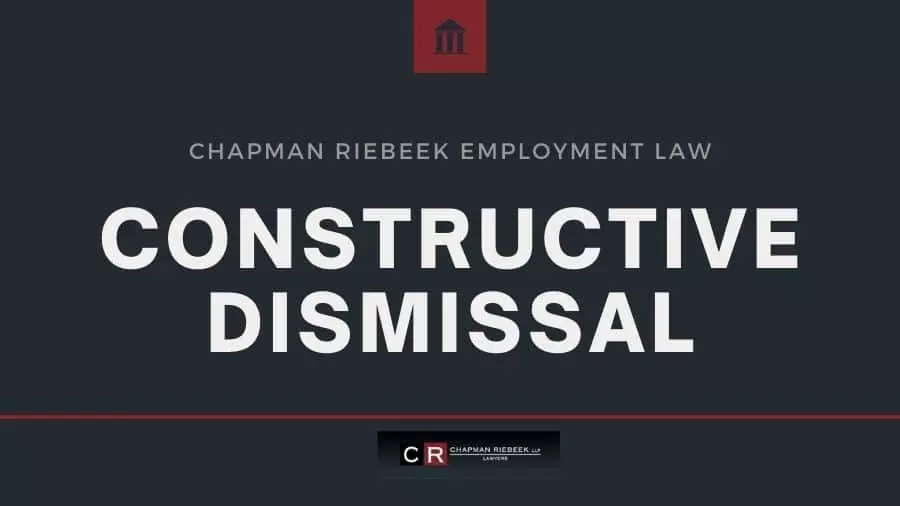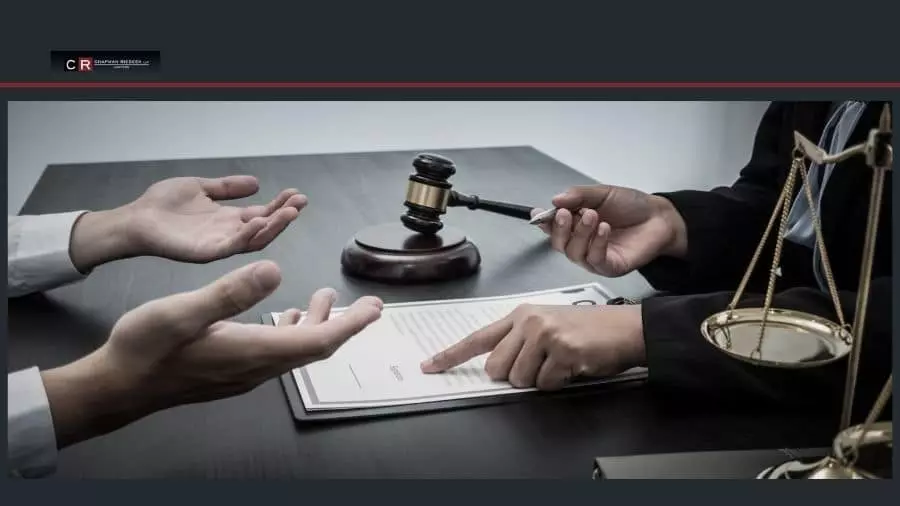In recent years, many people in Alberta have lost their jobs. However, due to the stress surrounding the events, many were not aware of their rights as employees. Hence, employers dismissed these people without the proper severance because of their lack of knowledge. For this reason, Chapman Riebeek is a law firm with decades of experience in answering some of the most common questions amongst employees that suffered constructive dismissal and unfairness of it.

What is Considered as Constructive Dismissal in Alberta?
Part III of the Canada Labour Code governs constructive dismissals or, better yet, unfair or unjust constructive dismissal that interests the employees who were laid off from their jobs. However, many people find that the explanation in certain sections is not quite simple, so they turn to the employment lawyer for advice.
The Simple Definition of Constructive Dismissal
At the core of each working relationship is the agreement signed by both employer and the employee. This contract is the official written statement that both parties will perform their duties mentioned in the document. However, breach of contract by either of the parties is considered a cause for either dismissal of the lawsuit.
The employer has the right to dismiss the employee if they failed to perform their duties or caused intentional damage to the employer. Meanwhile, many employers are using this to their advantage to dismiss an employee without severance or for similar reasons that only benefit them.
By definition, when an employer changes the terms of an employee’s employment contract so that the employee does not agree to, this is referred to as constructive dismissal.
It can be called a disguised dismissal, so the employees often seek protection from the law. In this case, the employer forces the employee to quit by changing the parts of the contract involving their position, payment, or other aspects of the agreement that are not aligned with the employee’s wishes.
However, the employee’s perception of the situation is not what determines the case of whether or not the employer abused the contract or the employee. Constructive dismissal is based on an objective view of the employer’s conduct. The most important factors are the seriousness of an employer’s failure or actions during the situation.
The majority of such cases are won if the employer has included the changes without the employee’s consent. The most obvious example is when an employee clearly states non-acceptance of these new terms and quits, usually within a short period. On the other hand, if an employee does not resign, it is considered that they accepted these changes.
This claim is essential for any employee. In simple terms, if an employee waits too long to resign months after the breach of contract, it means they accepted the employer’s behavior. Of course, this is different when the agreement states that the employee reserves the right to take legal action. Such cases are few, and therefore if employees have any doubt about these rights, they should contact the employment lawyer.

Furthermore, the official complaint has to be filed within 90 days alleging unjust dismissal at a Labour Program office after the employer changes the terms in the contract. An employee must have at least 12 consecutive months of employment with the employer. In addition, they cannot be covered by a collective agreement before filing claims for unjust constructive dismissal.
The complaint claims the inspector will consider unjust dismissal. The inspector will attempt to assist parties in settling within a reasonable time. If no such agreement occurs, the inspector will surrender the case to an adjudicator, and the process can take up to three months.
Examples of Constructive Dismissal in Alberta
Fundamental terms of the employment agreement consist of conditions that are appealing to the employee, whether it is:
- Pay
- Work hours
- Duties
- Benefits
- Paid time off
- Maternity or paternity leave
However, the moment the employer tries to change these conditions one-sidedly, it can be considered constructive dismissal if the employer does not have the right to reasonable changes to company policies. Hence some examples of cases that have been confirmed as constructive dismissal might give you a clearer image of what constitutes constructive dismissal in Alberta.
Changes in authority or duties
The most common reasons employees file constructive dismissal claims are mainly changes to pay or position. Perhaps the degradation of the duties or job title is the best example. Such measures, whether or not accompanied by wage or job title changes, constitute a disguised dismissal. Due to the company’s reorganization, the employer calls upon employees to change their position below the current one. Of course, most self-respecting employees will refuse such an offer.
Suspensions and sanctions
More often than not, employees are forced to quit under threats of dismissal, degradation, or unfair suspension, followed by a reduction in salary. These actions constitute a constructive dismissal. In other words, the unjust and intolerable situation for employees may be a cause for filing a claim against constructive dismissal.
Changes in position, hours, salary, or benefits
Changes in the location of employment, if the employee was never acquainted with potential relocation as part of the job, can be considered as constructive dismissal. Similarly, the changes in working hours, salary, or benefits such as maternity leave without prior notice are sufficient reasons for a claim against such actions on behalf of the employer. However, a word of caution: an employment status from full-time employee to independent contractor also constitutes constructive dismissal.
Employees that have any doubts about whether or not their case constitutes constructive dismissal are advised to seek advice from an employment lawyer as each case is different and can be hard to prove.
What constitutes a fair settlement for constructive dismissal?
Apart from the employer’s actions and whether or not the employee has sufficient work in the company. There are some pointers about what is considered a fair settlement to constructive dismissal. First, the factors depend on the age of each employee:
- An employee under the age of 22 earns five weeks’ compensation for each full year spent with the organization.
- An employee between 22 and 41 earns one week’s salary each year of service.
- Employees aged 41 and up are entitled to five weeks’ pay per year with the company.

In Alberta, How Can Employees Prove Constructive Dismissal?
Once faced with constructive dismissal, there are three actions that employees can perform:
- Agree to offered changes which is not always a desirable action for the employee
- Consider resigning, which is a clear sign to the employer that the working relationship is terminated.
- Make it officially known that a person does not accept the changes as an employee. It can often result in dialog and resolution.
However, if no resolution is achieved through dialog, it is often the next step to take legal advice and file a claim. In addition, the constructive claim is hard to prove. The two essential points are evidence of the breach of contract and that an employee has resigned as a direct response.
How do you prove constructive dismissal? The best chance of winning in court is to provide as much written evidence as possible that supports the employee’s theory of violation of the agreement. Oral evidence will have no effect in the courtroom.
Notes of relevant events and occurrences can be helpful if they have an exact time and date. Many people sense what is about to happen once the environment atmosphere changes, and it’s an excellent time to seek professional advice from employment lawyers in Alberta. Their knowledge can help employees take all necessary actions beforehand to prepare for the upcoming situation. In addition, the employers move quickly, supported by entire departments of HR and advocates.
In addition majority of employers, once in the courtroom, will identify grounds for disciplinary actions such as incompetence, negligence, and misconduct. Hence it’s an excellent motivation to prepare in advance since doing nothing will have no impact on the outcome for employees.
Constructive Dismissal In Conclusion
Perhaps there is always an unexpected moment when things take a wrong turn. It is never a pleasant feeling being laid off from the job. However, if the employer breached the agreement that both parties signed and committed to, there are no legal grounds for breaking those written rules.
It can be challenging, especially if one lacks knowledge of how things develop in the court. Therefore, it is always best to make some agreement before resorting to more serious matters.
Chapman Riebeek lawyers have represented numerous clients in such cases. Along the way, we have developed a pattern of behavior that most employers use when attempting to dismiss employees. Hence, before you decide, give us a call and let us discuss your case during consultation time. You may be able to reach an outcome that will benefit you, not just your employer.

